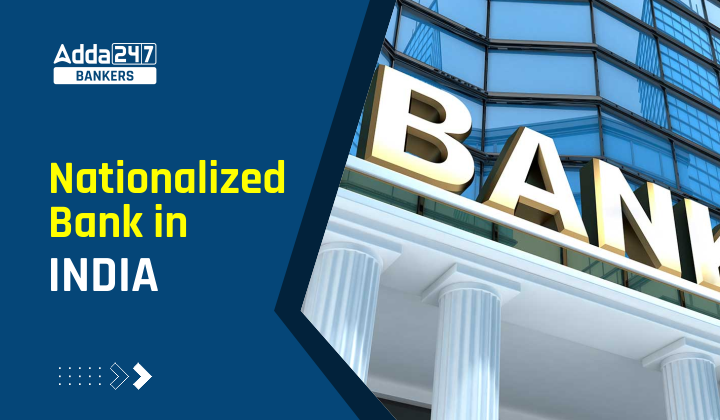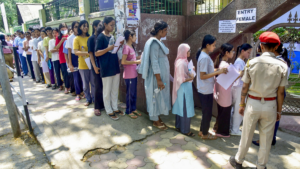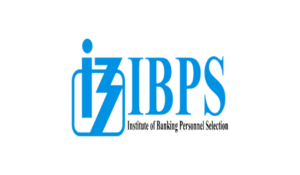At present, public sector banks continue to be a vital part of India’s financial infrastructure. These banks are primarily owned by the Government of India and play a significant role in implementing various economic and social welfare schemes. As of 2025, there are a total of 12 nationalized banks operating across the country, each contributing actively to the financial inclusion and economic growth of India. These banks are regulated by the Reserve Bank of India (RBI), which is the central authority overseeing the Indian banking system.
List of 12 Nationalized Banks in India 2025
For candidates preparing for upcoming bank exams, it is important to stay updated with the latest list of nationalized banks, along with their headquarters and taglines. In the section below, we have provided the complete and updated list of 12 nationalized banks in India as of 2025, including their official headquarters and taglines to help aspirants with effective exam preparation.
| Name of the bank | Headquarter of bank | Establishment of bank |
| State bank of India | Mumbai and Maharashtra | 1955 |
| Punjab National Bank | New Delhi | 1894 |
| Bank of Baroda | Vadodara Gujrat | 1908 |
| Bank of India | Mumbai and Maharashtra | 1906 |
| Bank of Maharashtra | Pune and Maharashtra | 1935 |
| Union Bank of India | Mumbai and Maharashtra | 1919 |
| Canara Bank | Bengaluru and Karnataka | 1906 |
| Central Bank of India | Mumbai and Maharashtra | 1911 |
| Indian Bank | Chennai and Tamilnadu | 1907 |
| Indian Overseas Bank | Chennai and Tamilnadu | 1937 |
| Punjab and Sind bank | New Delhi | 1908 |
| UCO bank | Kolkata and West Bengal | 1943 |
Nationalized Bank in India
Nationalized Bank in India refers to those banks that were taken over by the Government of India to ensure better control over credit delivery and to promote financial inclusion. These banks play a crucial role in supporting the country’s economic development by providing banking services in both urban and rural areas. As of 2025, there are 12 nationalized banks in India, and they continue to play a pivotal role in implementing government schemes, offering loans to priority sectors, and promoting inclusive growth across the country.
Why Banks Were Nationalized?
Nationalization is the opposite of privatization. Nationalization is a process by which the government takes over private assets and brings them under public ownership. The nationalization of banks was implemented under the Banking Companies Act of 1970. The ordinance came into force on 19th July 1969, to alleviate social controls over banks with a view to securing a better banking system for the needs of economic development.
About Nationalized Bank in India
Let us now look at the details of All the 12 Public Sector Banks in India.
State Bank of India
SBI is the largest commercial bank of the country and has a history of 200 years. SBI is the largest in terms of assets, deposits, profits, branches, customers and employees, etc. The Government of India has a stake of more than 50% in SBI.
Punjab National Bank
The Bank was established to help the Indians. PNB is the first Swadeshi Bank, which commenced its operations on April 12, 1895, from Lahore, and had an authorized capital of Rs 2 lac and working capital of Rs 20,000. It is now merged with the Oriental Bank Of Commerce and the United Bank Of India.
Indian Bank
Indian Bank was established on 15th August 1907 along with the Swadeshi movement. It has an India presence with 9786 touch points comprising 2872 domestic branches, 3892 ATMs/BNAs, and 3022 BCs, with the merger of Allahabad Bank.
Canara Bank
Founded as ‘Canara Bank Hindu Permanent Fund’ in 1906, by late Shri Ammembal Subba Rao Pai, a philanthropist, this small seed blossomed into a limited company as ‘Canara Bank Ltd.’ in 1910 and became Canara Bank in 1969 after nationalization. Now, with the merger of Syndicate Bank.
Indian Overseas Bank
The bank was founded on 10th February 1937 by Shri. M.Ct.M. Chidambaram Chettyar, a pioneer in many fields. The Bank was founded by him with the main objective of specializing in foreign exchange business in banking to take the Bank across the globe
UCO Bank
Founded in 1943, UCO Bank is an advertisement bank and a Government of the Republic of India endeavor. Its Board of administrators consists of state representatives from the govt of India and depository financial institutions of India moreover as eminent professionals like accountants, management consultants, economists, businessmen, etc.
Bank Of Maharashtra
Maharashtra has been a progressive region additionally Banking activity was also started in this region quite early. traditionally speaking, the Bank of Mumbai established in 1840 was the primary depository financial institution in a geographic area.
Punjab and Sind Bank
It was in the year 1908 when a humble idea to uplift the poorest of poor of the land culminated in the birth of Punjab & Sind Bank with the far-sighted vision of luminaries like Bhai Vir Singh, Sir Sunder Singh Majitha, and Sardar Tarlochan Singh. The bank was founded on the principle of social commitment to help the weaker section of society in their economic endeavors to raise their standard of living.
Bank of India
Bank of India was based on the 7th of September 1906 by a gaggle of eminent businessmen from Bombay. The Bank was beneath-public possession and management until July 1969 once it absolutely was nationalized at the side of thirteen different banks. starting with one workplace in Bombay, with a paid capital of Rs.50 hundred thousand and fifty workers, the Bank has created a rising over the years and blossomed into a mighty establishment with a robust national presence and sizable international operations.
Central Bank of India
Established in 1911, the financial organization of India was the primary Indian bank that was the whole closely held and managed by Indians. The institution of the Bank was the final word realization of the dream of Sir Sorabji Pochkhanawala, the founding father of the Bank. Sir Pherozesha Mehta was the primary Chairman of a very ‘Swadeshi Bank’.
Union Bank of India
The bank was established on 11th November 1919, the Bank now operates through over 4200+ branches across the country. It is merged with Andhra Bank and Corporation Bank in 2021. The Bank’s core values of prudent management without ignoring opportunities is reflected in the fact that the Bank has shown uninterrupted profit during all 96 years of its operations.
Bank Of Baroda
Bank of Baroda is an Indian state-owned International banking and money services company headquartered in Vadodara (earlier referred to as Baroda) in Gujarat, India. The bank was supported by the Prince of Baroda, prince Sayajirao Gaekwad III on the twenty Gregorian calendar month 1908.
Some Important Facts Related to Nationalized Banks
- State Bank of India is a Nationalized bank and the largest bank in India.
- PNB is the second largest government-owned bank in India, both in terms of its business volumes and its network.
- SBI is the 49th largest bank in the world by total assets and ranked 221st in the Fortune Global 500 list, being the only Indian bank on the list.
- Union Bank of India, the bank which was inaugurated by Mahatma Gandhi in 1919.
- The Central Bank of India is the first commercial Indian Bank completely owned and managed by Indians.
- Bank of Maharashtra is a Nationalized bank, it has the largest network of branches of any nationalized bank in the state of Maharashtra.
- Bank of India was the first bank to open a branch outside India (London) in 1946.



 IBPS Clerk Mains Expected Cut Off 2025, ...
IBPS Clerk Mains Expected Cut Off 2025, ...
 UPSC EPFO Result 2025 Out For EO/AO &...
UPSC EPFO Result 2025 Out For EO/AO &...
 IBPS RRB PO Mains Admit Card 2025 Out at...
IBPS RRB PO Mains Admit Card 2025 Out at...








